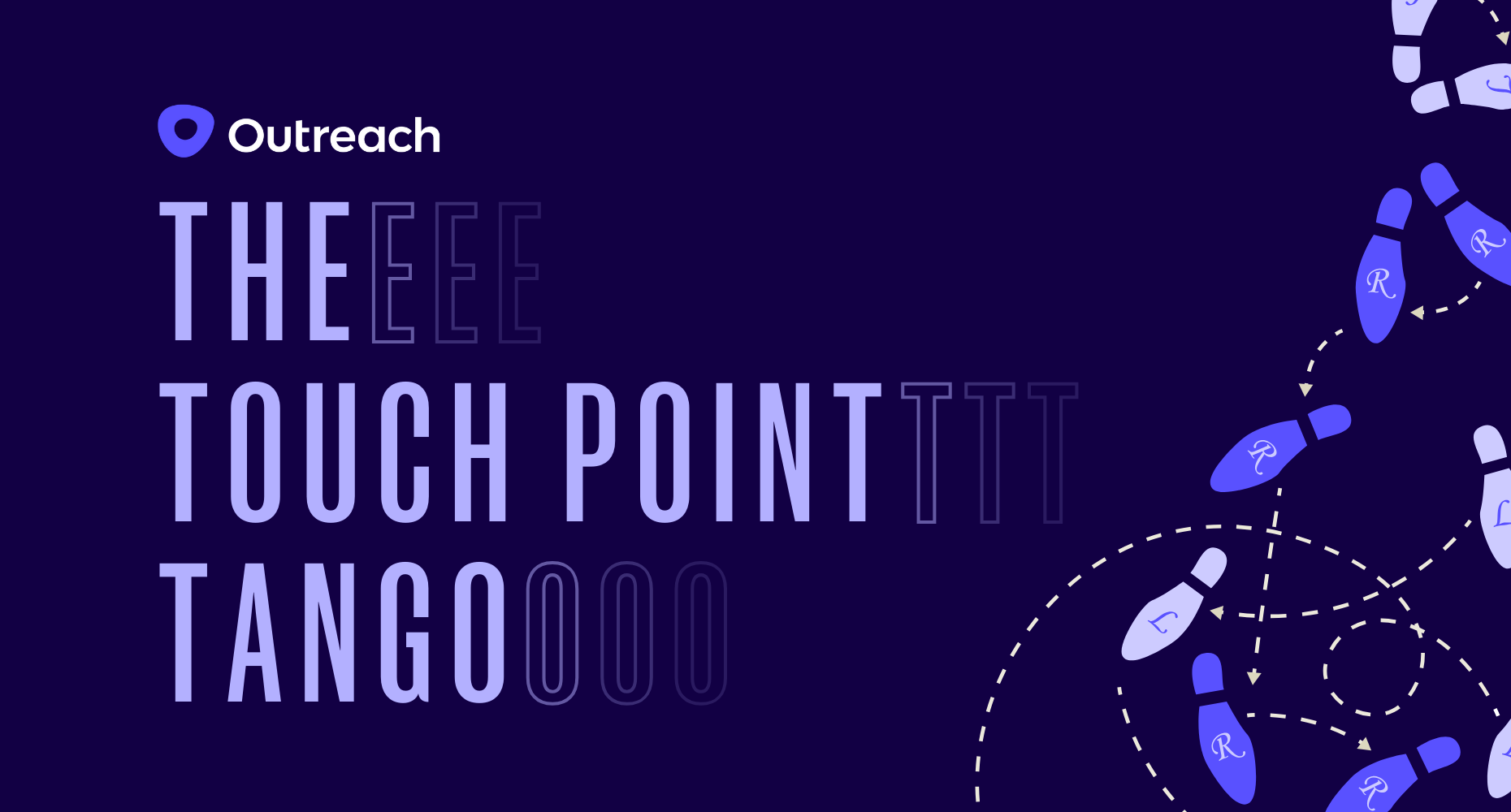74% of sales leaders agree: They're more likely to purchase if a salesperson takes a data/insights-driven approach. To help you get there, a qualification framework isn't just useful — it's critical.
With so many competing signals, longer deal cycles, and multiple decision-makers, MEDDPICC stands out as a powerful sales methodology that reps can use to navigate the complexities of today's market. Here's how to use it to your strategic advantage.
What is MEDDPICC?
MEDDPICC is a sales methodology that helps reps qualify every deal in an efficient, consistent way. The acronym stands for Metrics, Economic Buyer, Decision Criteria, Decision Process, Paper Process, Implicate the Pain, Champions, and Competition.
Metrics
Metrics refer to the quantifiable goals and objectives that a potential buyer aims to achieve with your software solution. Understanding these metrics is crucial for tailoring your pitch and demonstrating the value of your product.
Examples: Increase lead generation by 30% within the next quarter, reduce customer churn rate by 20% over the next year
Questions to ask:
- What are the specific key performance indicators (KPIs) your company is currently tracking?
- Can you share your target metrics or goals for the upcoming quarter/year?
- How are you currently measuring success in this area?
- What challenges or obstacles are preventing you from achieving these metrics?
Economic buyer
The Economic Buyer is the person or team with the authority to make purchasing decisions. Identifying and engaging with this key stakeholder is vital for closing deals.
Examples: Chief Financial Officer (CFO), Head of Procurement
Questions to ask:
- Who holds the authority to make the final purchasing decision within your organization?
- Are there any specific individuals or teams that need to be involved in the decision-making process?
- What are the primary criteria or factors that influence your purchasing decisions?
- What is the budget allocated for this particular project or solution?
“In this economy, you don't have a real deal unless you have a commitment from an exec sponsor, an economic buyer, or the highest ranking person in the department you are selling into.”
Decision criteria
Understanding the criteria that the buyer will use to evaluate software solutions helps you tailor your pitch and demonstrate how your product meets their needs.
Examples: Cost per license, integration capabilities with existing systems, scalability to accommodate future growth
Questions to ask:
- What specific features or capabilities are essential for your organization when evaluating software solutions?
- Are there any must-have criteria or deal-breakers that we should be aware of?
- How do you prioritize these criteria when assessing potential solutions?
- Are there any previous experiences with similar software that influenced your decision criteria?
Decision process
The decision process is a series of steps the buyer follows to go from making an evaluation to making a decision.
Examples: Initial discovery call, followed by a product demo, then a formal proposal review
Questions to ask:
- Can you outline the typical steps involved in your decision-making process?
- What is the expected timeline for making a final decision?
- Who are the key stakeholders involved in each stage of the process?
Paper process
The paper process is the series of steps required to move from decision to signature. It’s often determined by a procurement team and requires legal and security reviews. Knowing the steps and timeline involved in the paper process helps you understand the true timeline to closing a deal and avoid surprise deals. That said, it’s less urgent to nail this down in your first meeting.
Examples: legal review, privacy review
Questions to ask:
- Can you tell me what exactly has to happen for your organization to place the purchase order?
- How much time does the legal process typically take?
- When could I get introduced to your procurement team to start the process?
Implicate the pain
Understanding the challenges and pain points the prospect faces allows you to position your solution as the ideal remedy.
Examples: inefficient lead management processes, high customer churn rate, low adoption
Questions to ask:
- What are the primary challenges or pain points your organization is currently experiencing in this area?
- How have these challenges impacted your business operations or goals?
- Are there any previous attempts to address these challenges, and if so, what were the outcomes?
- What specific improvements or changes are you hoping to achieve by implementing a new solution?
Champions
A champion is someone within the prospect's organization who supports your solution and can advocate for its adoption.
Examples: a department head who has used your solution in the past, a director who is excited about the value you can deliver
Questions to ask:
- Is there an individual within your organization who is particularly enthusiastic about solving these challenges?
- Who would be the best advocate for our solution during the decision-making process?
- What are the typical responsibilities of a champion in your organization?
- How can we collaborate with your champion to address any concerns or questions that may arise?
When more than one contact is engaged, deals are 37% more likely to close
Sales cycles are getting longer, and more voices need to be heard before any contracts are signed. You already know multithreading is a great practice, but cross-department threading could be your strategic advantage.
Competition
Mapping the competitive landscape helps you position your solution effectively and highlight its advantages.
Examples: similar software solutions, in-house development
Questions to ask:
- Are there any other software solutions or alternatives that you're currently considering?
- What factors differentiate our solution from other options you're exploring?
- Have you had any previous experiences with similar solutions or competitors in this space?
- What are the key criteria that will influence your choice between different options?
What are the benefits of using MEDDPICC in a sales strategy?
More and more companies are taking advantage of complex modern sales methodologies (e.g.challenger sales methodology) to acquire new market share. To stay competitive in the current B2B environment, it's imperative to follow suit.
MEDDPICC is a modern approach to streamlining your sales strategy. It offers a comprehensive framework for qualifying sales and achieving your goals. The key benefits of implementing MEDDPICC include:
Higher sales efficiency
MEDDPICC provides your team with a structured blueprint. It gives your sales reps the information necessary to make actionable decisions throughout the sales process. This approach helps identify gaps in the sales strategy and prevents the sales team from wasting time on low-potential customers.
Improved qualification of prospects
“Qualifying is not a one-off checkpoint; it's a continuous thread woven through every stage of the deal.”
By identifying pain levels and understanding decision criteria, sales teams can assess the prospect's needs and craft a perfect pitch based on extensive information about the decision maker.
This creates a targeted sales approach, benefits sales pipeline management, and increases the chances of closing the deal. Meanwhile, it reduces the risk of pursuing deals that are not a good fit.
Increased close rates
MEDDPICC offers the sales team an actionable checklist for identifying the decision-maker, understanding the decision process, and speeding up the purchase decision. At the same time, it helps sales reps evaluate the customer's potential to get to the bottom of the sales funnel. All of this contributes to higher deal closure rates and reduces the sales and marketing spend.
Operationalizing MEDDPICC with Outreach
While it's easy to follow these guidelines in theory, getting your reps to use your sales methodology in a consistent, standardize way can be challenging without the right technology. That's why Outreach provides a structured framework for teams to document qualification criteria throughout the sales process — whether they're researching a prospect or reevaluating decision criteria during final negotiations.
Smart Meeting Assist automatically summarizes your recorded sales meetings using AI. It can answer direct questions about what was discussed and capture next steps mentioned during the call. Even better: responses include deep links to the relevant time points throughout the call recording, so users can play back key moments for full context.
There's more to explore
When a deal is on the line, every minute counts — and with Outreach, time is on your side. Data shows that sellers wielding Outreach's account planning tools close deals 26% faster than those who manage their deals the old-fashioned way. Take a look at a typical day in the life of Brian Gerrard, an Account Executive who leverages Outreach to its fullest potential. His story could be the blueprint for your next success.
See it for youself
Discover how Outreach helps you leverage deal insights to align with your buyers, sell with confidence, and advance more deals to the next stage.
Stay up-to-date with all things Outreach
Get the latest product news, industry insights, and valuable resources in your inbox.


